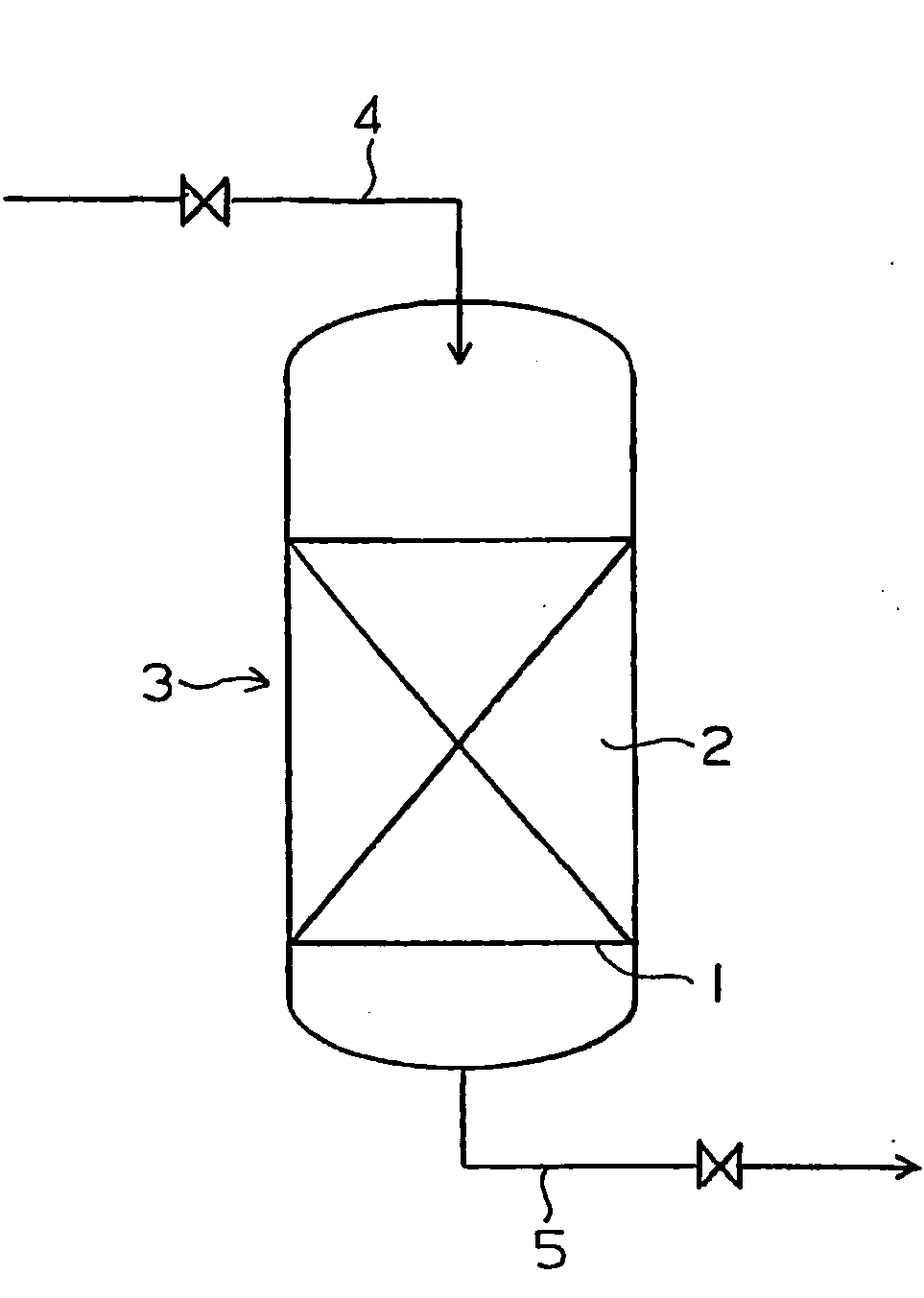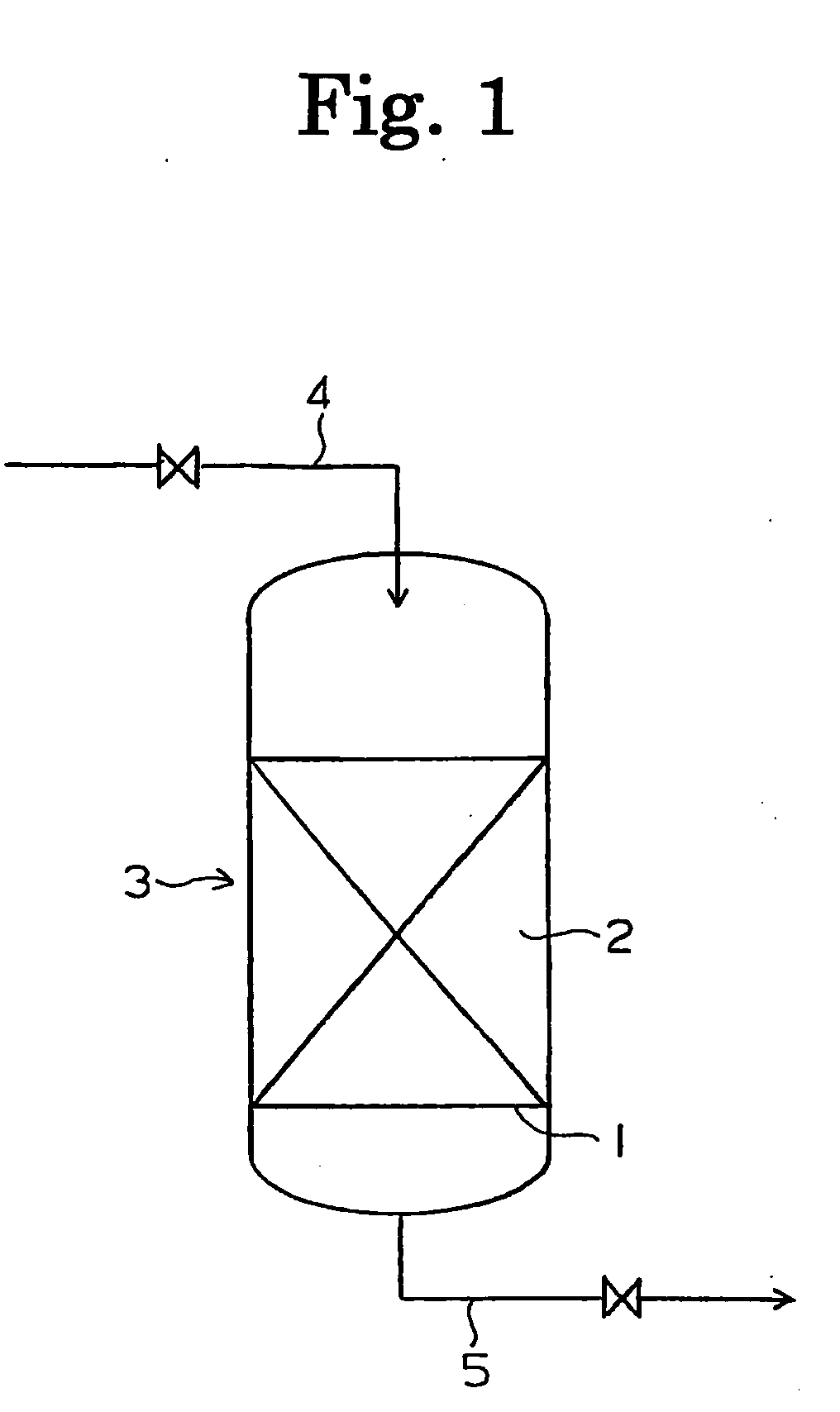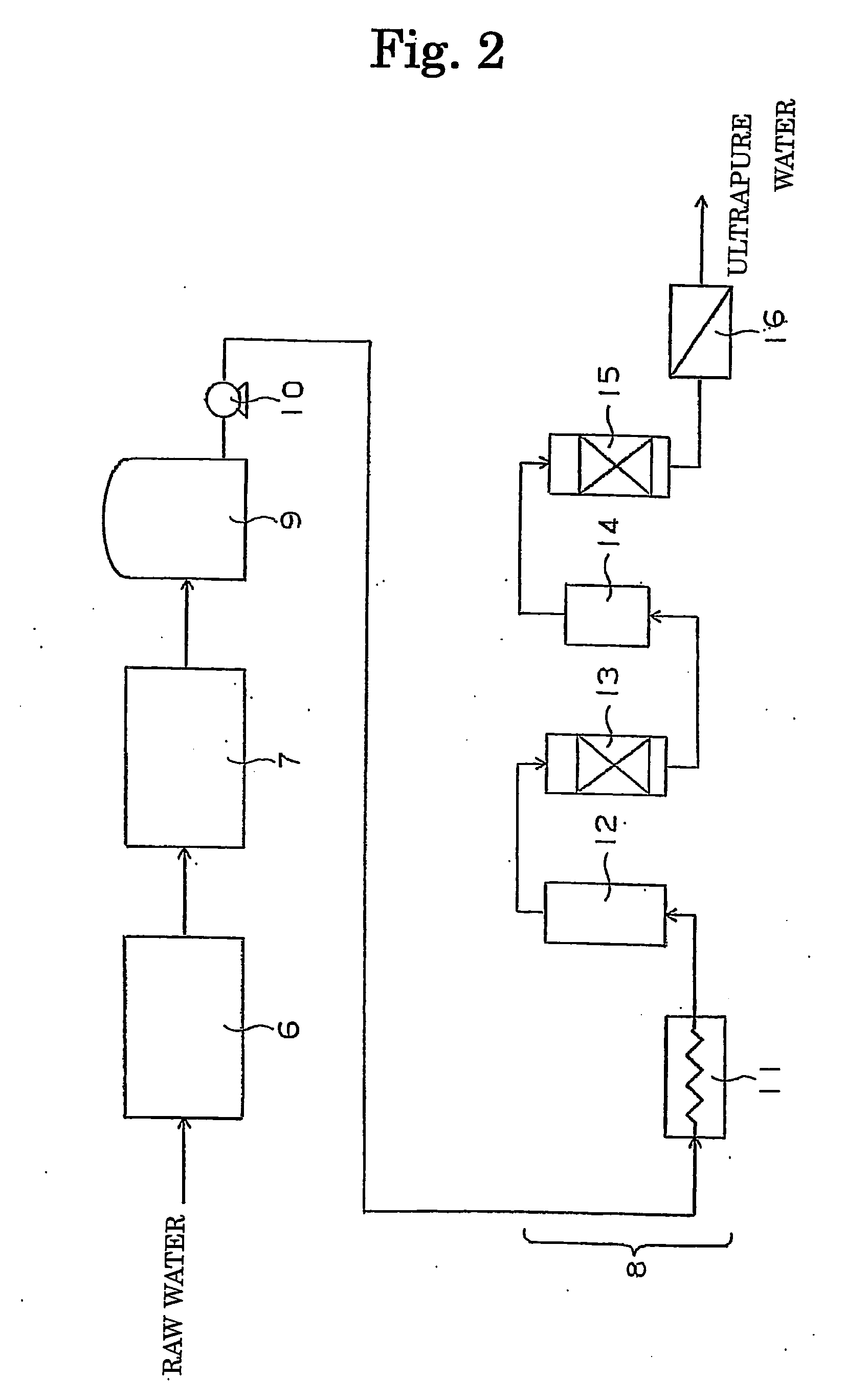Process and Apparatus for Removing Hydrogen Peroxide
- Summary
- Abstract
- Description
- Claims
- Application Information
AI Technical Summary
Benefits of technology
Problems solved by technology
Method used
Image
Examples
examples
[0034]The present invention will be described more specifically with reference to examples in the following. However, the present invention is not limited to the examples.
[0035]In Examples and Comparative Examples, the concentration of hydrogen peroxide and the concentration of dissolved oxygen were measured in accordance with the following methods.
(1) Concentration of Hydrogen Peroxide
[0036]A reagent for determining a small concentration of hydrogen peroxide was prepared by adding sodium sulfate (anhydrous) to 4.8 mg of phenolphthalein, 8 mg of copper sulfate (anhydrous) and 48 mg of sodium hydroxide so that the amount of the resultant mixture was adjusted at 10 g. The obtained reagent in an amount of 0.5 g was added to and dissolved into 10 ml of water for the measurement. After the resultant solution was left standing at the room temperature for 10 minutes, the absorbance of light of 552 nm was measured.
(2) Concentration of Dissolved Oxygen
[0037]The concentration of dissolved oxy...
example 1
[0038]Nano-colloid particles of platinum having an average diameter of 3.5 nm was deposited to be supported on a strongly basic anion exchange resin of the gel type in an amount of 0.07% by weight of the support, and a catalyst for decomposing hydrogen peroxide was prepared.
[0039]A column made of an acrylic resin was packed with 100 ml of the prepared catalyst for decomposing hydrogen peroxide, and ultrapure water containing 29.54 ppb by weight of hydrogen peroxide was passed through the column at SV=1,000 h−1 in the downward direction. The concentration of hydrogen peroxide in the treated water discharged from the column was 0.38 ppb by weight, and the fraction of removed hydrogen peroxide was 98.7%.
[0040]Ultrapure water containing 29.5 ppb by weight of hydrogen peroxide was passed through a column packed with the same catalyst for decomposition of hydrogen peroxide at SV=200 h−1, 400 h−1, 600 h−1, 800 h−1, 1,500 h−1 and 2,000 h−1 in the downward direction. The fractions of removed...
example 2
[0041]The same procedures as those conducted in Example 1 were conducted except that a catalyst in which nano-colloid particles of palladium having an average diameter of 3.5 nm was deposited to be supported on a strongly basic anion exchange resin in an amount of 0.07% by weight of the support was used and ultrapure water containing 29.32 ppb by weight was passed through the column.
[0042]At SV=1,000 h−1, the concentration of hydrogen peroxide in the treated water discharged from the column was 0.50 ppb by weight, and the fraction of removed hydrogen peroxide was 98.3%. At SV=200 h−1, 400 h−1, 600 h−1, 800 h−1, 1,500 h−1 and 2,000 h−1, the fractions of removed hydrogen peroxide were 100.0%, 99.4%, 99.0%, 98.7%, 97.4% and 96.7%, respectively.
PUM
| Property | Measurement | Unit |
|---|---|---|
| Fraction | aaaaa | aaaaa |
| Percent by mass | aaaaa | aaaaa |
| Diameter | aaaaa | aaaaa |
Abstract
Description
Claims
Application Information
 Login to View More
Login to View More - R&D
- Intellectual Property
- Life Sciences
- Materials
- Tech Scout
- Unparalleled Data Quality
- Higher Quality Content
- 60% Fewer Hallucinations
Browse by: Latest US Patents, China's latest patents, Technical Efficacy Thesaurus, Application Domain, Technology Topic, Popular Technical Reports.
© 2025 PatSnap. All rights reserved.Legal|Privacy policy|Modern Slavery Act Transparency Statement|Sitemap|About US| Contact US: help@patsnap.com



